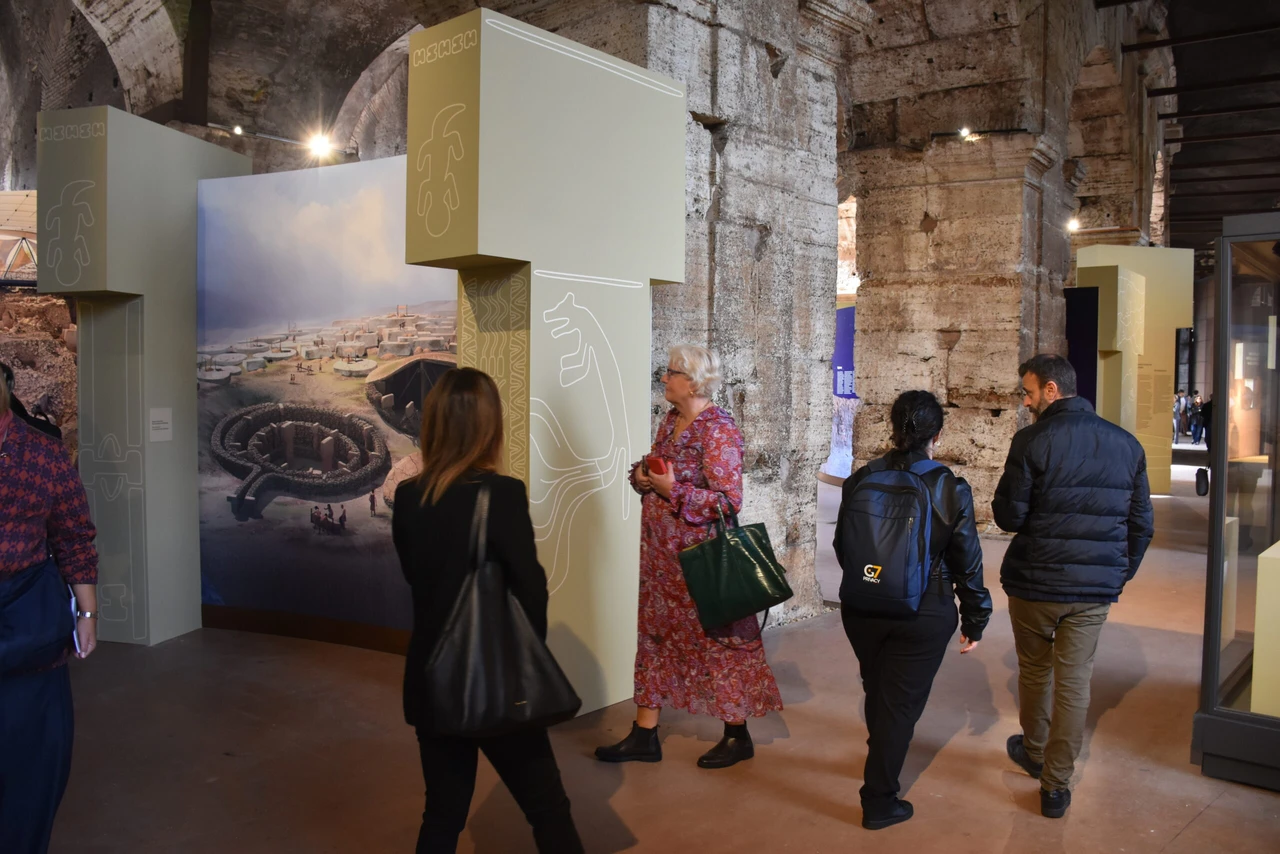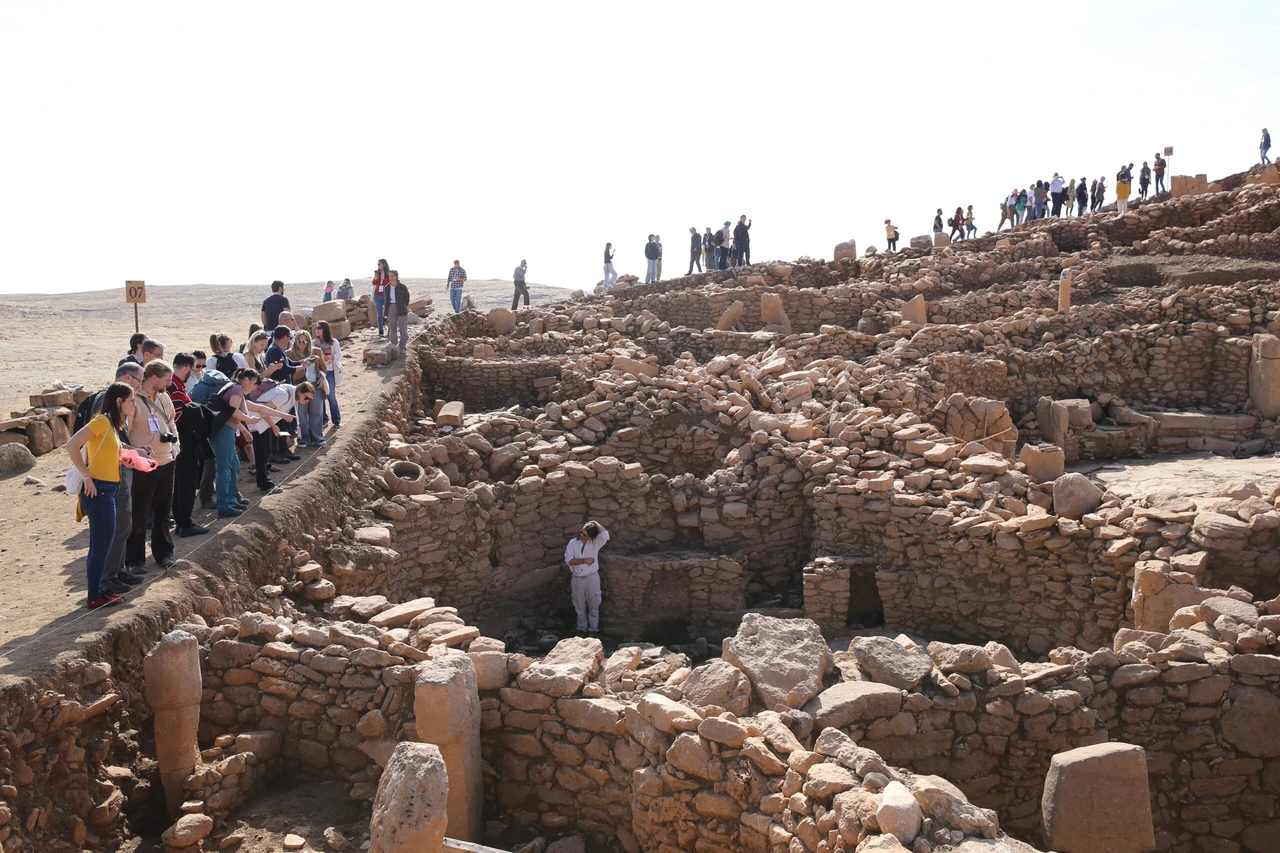Is world’s oldest calendar in Türkiye? Gobeklitepe discovery suggests so
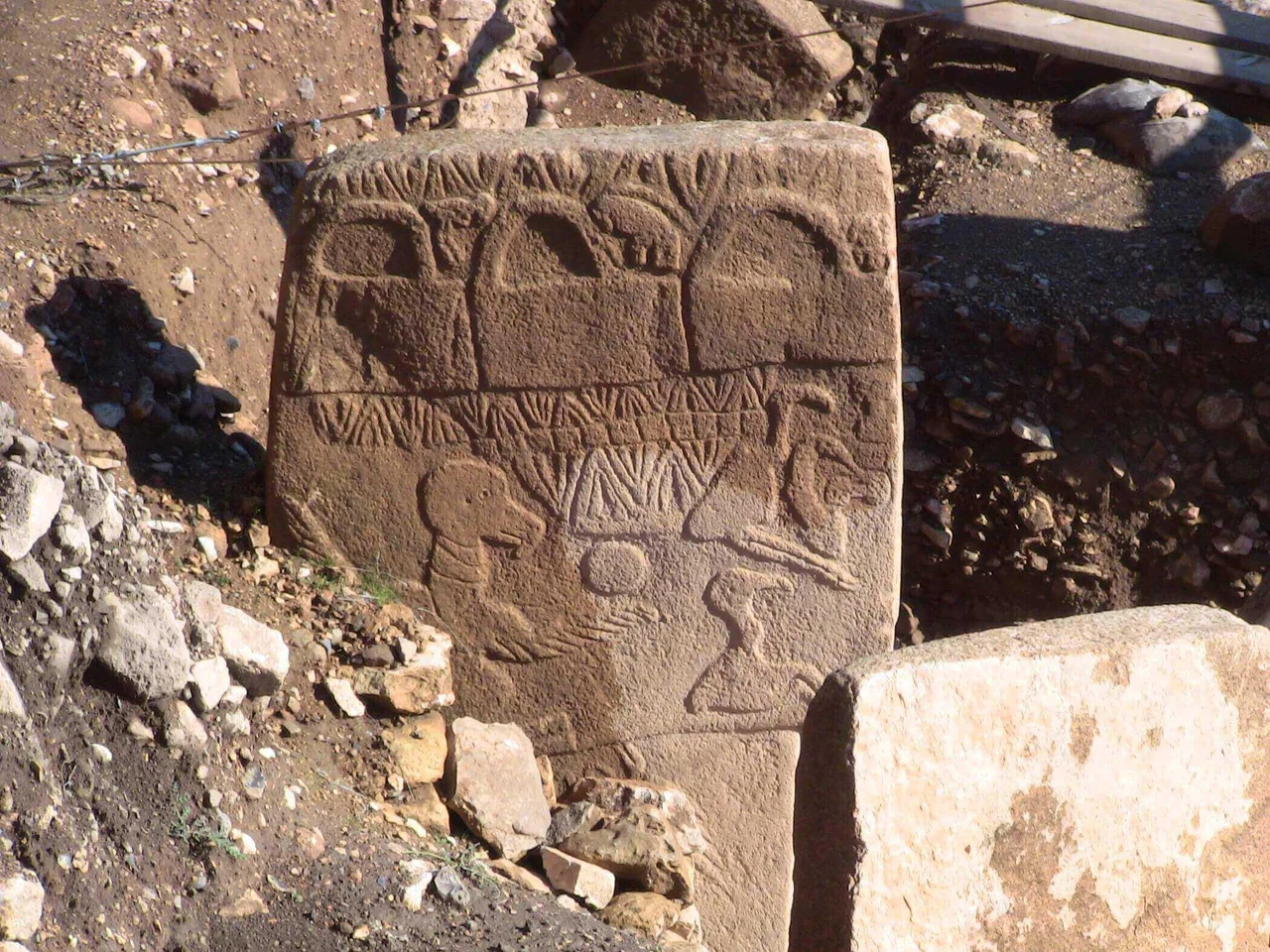 Obelisk 43 in Structure D has a large number of different depictions, including animals, geometric patterns and perhaps depictions of the monumental buildings themselves. It also bears a rare carving of a human being on an obelisk (bottom right). This human is a man (Phallus) and his head is separated from his body, Gobeklitepe, Sanliurfa, Türkiye (Photo via German Archaeological Institute (DAI), Gobeklitepe Archive)
Obelisk 43 in Structure D has a large number of different depictions, including animals, geometric patterns and perhaps depictions of the monumental buildings themselves. It also bears a rare carving of a human being on an obelisk (bottom right). This human is a man (Phallus) and his head is separated from his body, Gobeklitepe, Sanliurfa, Türkiye (Photo via German Archaeological Institute (DAI), Gobeklitepe Archive)
Martin Sweatman and his team from the University of Edinburgh claim that the symbols on a stone pillar at Gobeklitepe represent the oldest solar calendar in history.
According to their theory, this calendar was created in memory of a disaster caused by the impact of a comet.

Sweatman and his team believe that the symbols on the pillar are marked with “V” symbols representing a day, with a total of 365 “V” symbols indicating a year. Additionally, the calendar is said to have a structure with 12 months and 11 extra days.
Professor Necmi Karul, the excavation leader at Gobeklitepe and Karahantepe, responded to Sweatman’s claims in an interview with Cumhuriyet newspaper.
Karul stated that Sweatman’s “cosmic collision” theory is an unverified speculation, emphasizing that the pillar they refer to as P43 was constructed approximately 1,000 years after this alleged collision. He highlighted that the Gobeklitepe structures lack roofs, making it impossible to use these areas as observation points for the sky.
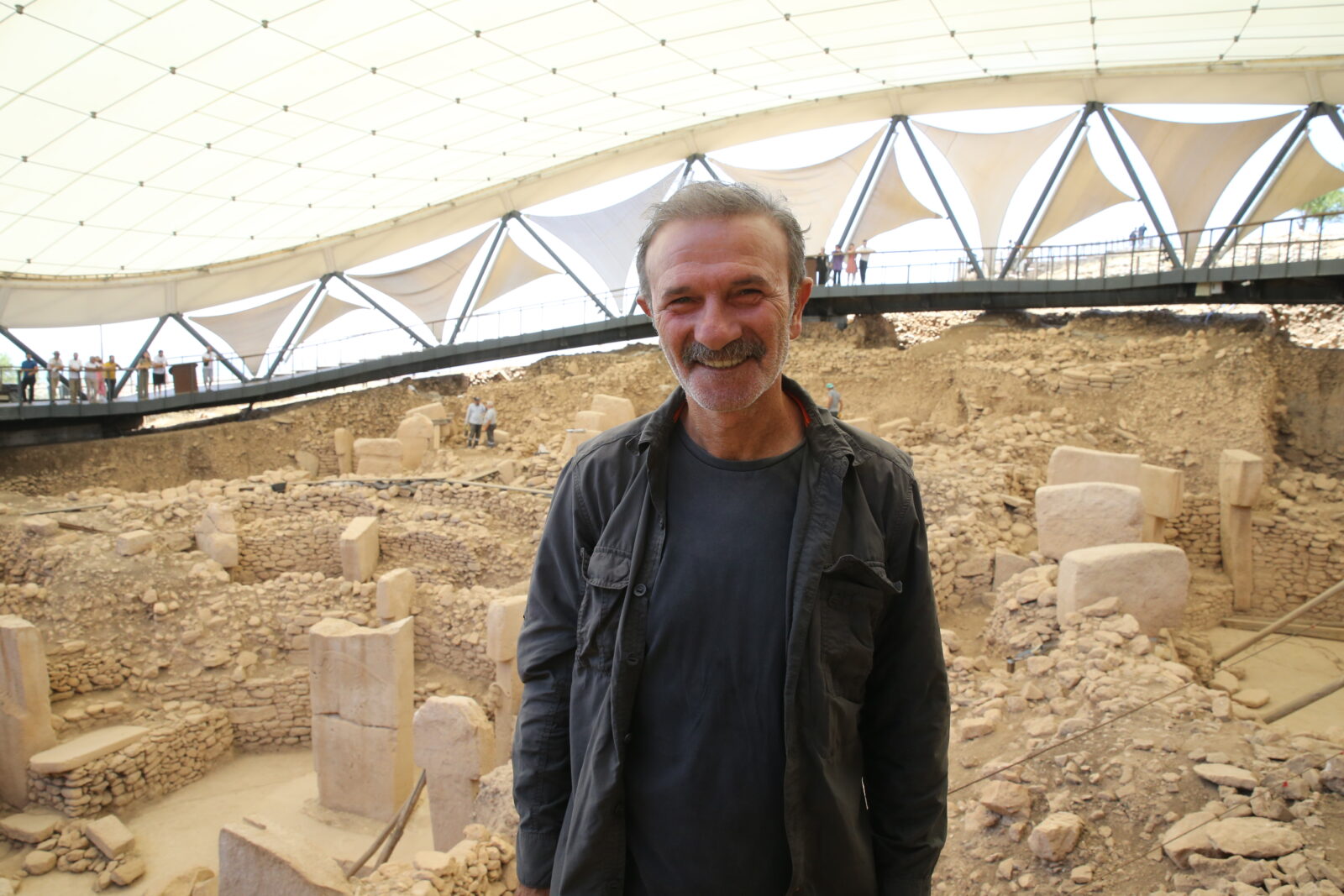
Professor Karul also pointed out that Sweatman selectively chose elements from Gobeklitepe and other contemporary sites to fit his narrative. Karul criticized Sweatman for lacking scientific rigor, noting that it is unclear whether prehistoric societies recognized celestial constellations and that their understanding of time was cyclical. Calendars arise from commercial and economic needs, suggesting that prehistoric societies did not require such a calendar.
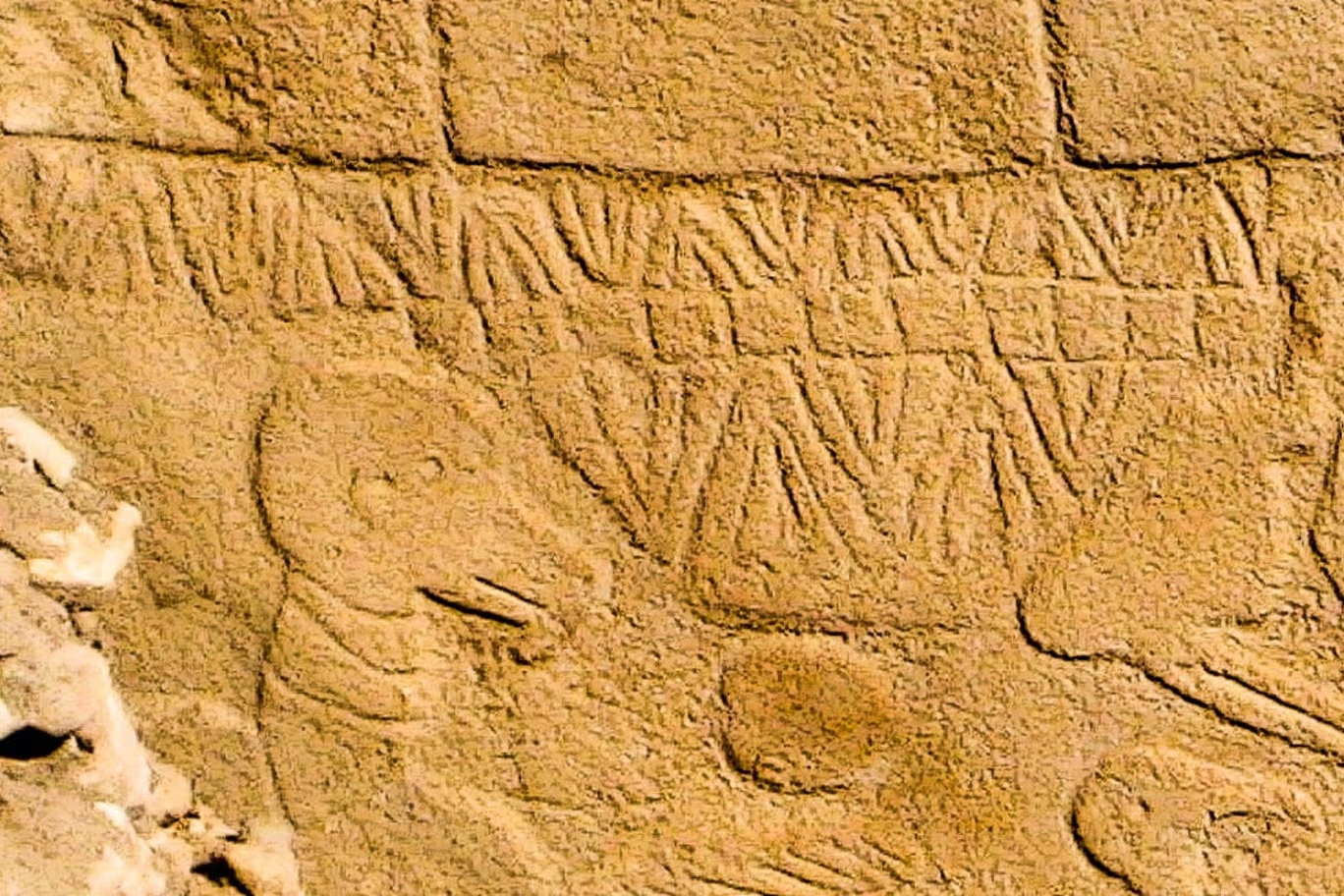
The structures at Gobeklitepe and similar sites reflect societal structures and mythological narratives, with early settled societies shaping their social order through these narratives. We spoke with Assoc. Prof. Tuna Akcay, who specializes in religion and belief in the Ancient Age, about these debates.
‘Extraterrestrial speculations and now cosmic collision rumors are tarnishing Gobeklitepe’
Recently, various unscientific claims about Gobeklitepe have emerged, including suggestions that it was used by aliens or served as an alien base. Recently, Dr. Martin Sweatman from the University of Edinburgh claimed that a monument at Gobeklitepe commemorates a cosmic collision, sparking significant debate.

Archaeologist Assoc. Prof. Tuna Akcay commented on these discussions, stating, “Such speculations are completely contrary to archaeological and scientific findings.”
He emphasized that Gobeklitepe, discovered in 1994, holds great importance with its monumental structures built by pre-agricultural hunter-gatherer communities, offering unique insights into the social, cultural, and religious life of the time.
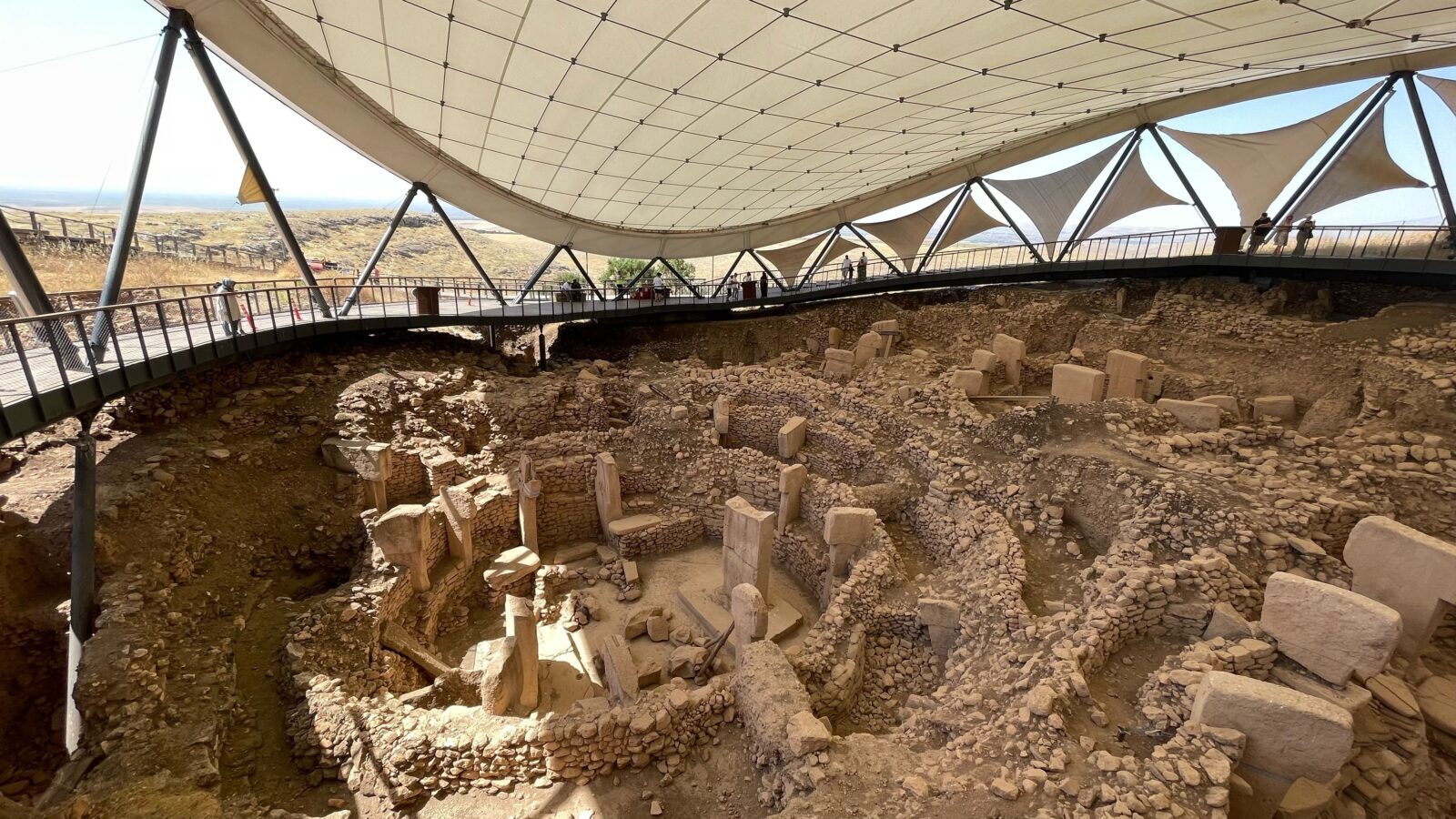
Akcay further noted, “There is no scientific evidence that Gobeklitepe was built or used by aliens. Similarly, Prof. Karul has also stated that Sweatman’s ‘cosmic collision’ theory is an unverified speculation. The pillar known as P43 was constructed approximately 1,000 years after this supposed collision. These claims are imaginative theories without scientific data and do not support the real archaeological findings. Throughout history, people have been eager to create mysteries to explain the unknown, but this leads to information pollution by non-scientists and misunderstandings of historical facts. Such speculation about significant archaeological sites like Gobeklitepe harm both scientific research and the accurate information of the public.”
In conclusion, the significance of Gobeklitepe stems from the unique information it provides about early human history and the insights it offers into the social and religious life of Neolithic people. Scientific facts clearly demonstrate that this impressive structure was built with human intelligence and effort. Understanding and appreciating Gobeklitepe requires approaches based on scientific methods and findings.
